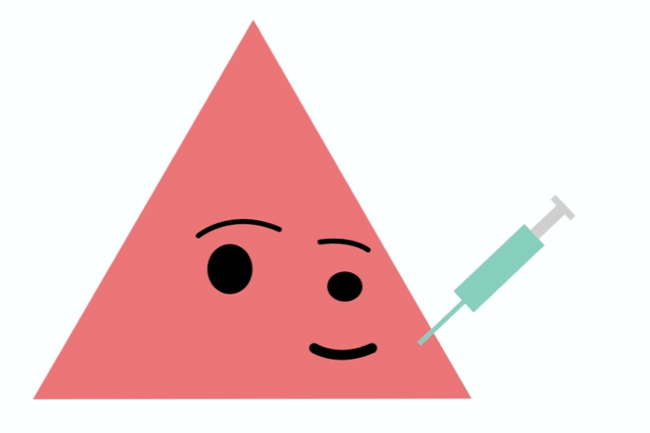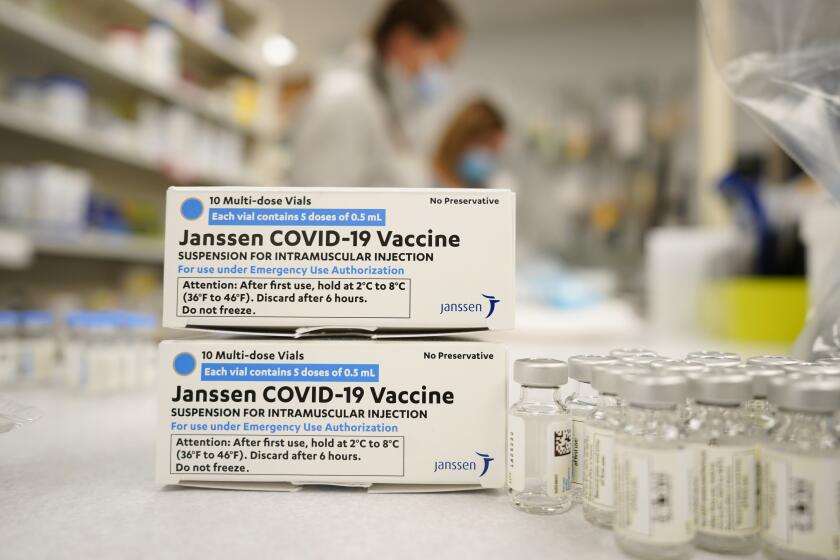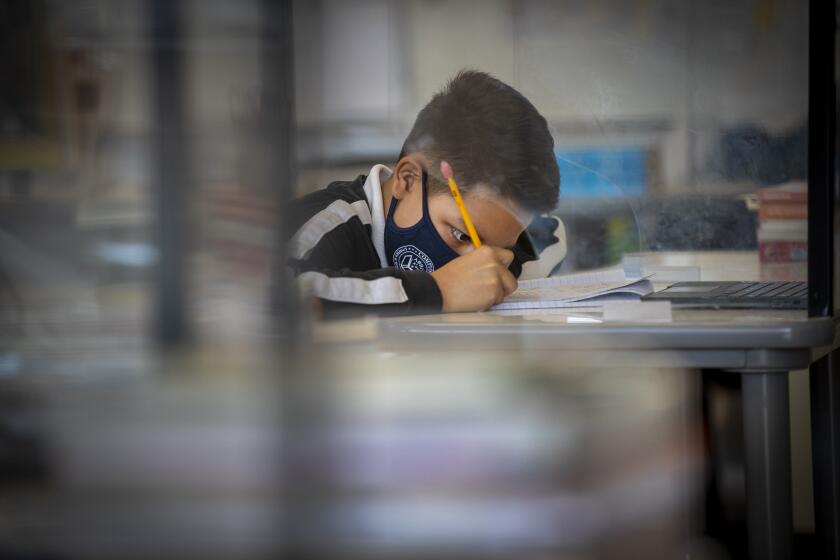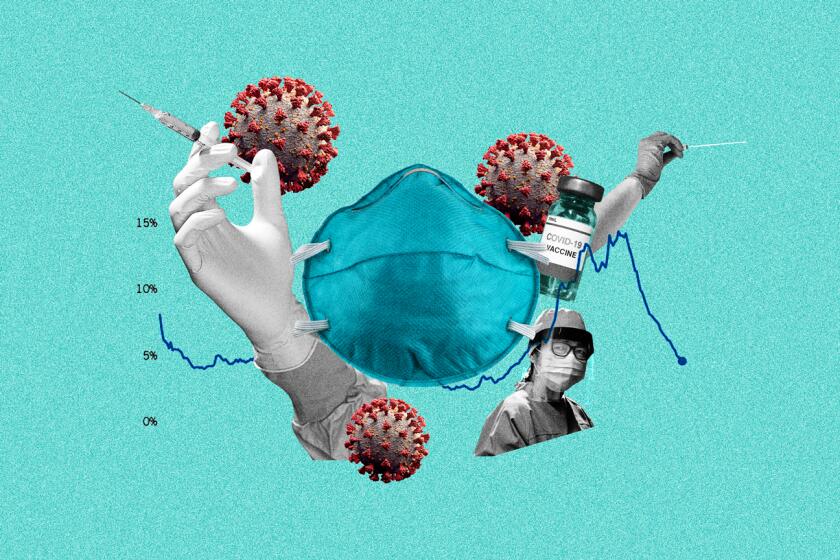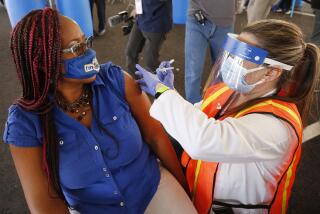One-quarter of Californians now fully vaccinated against COVID-19
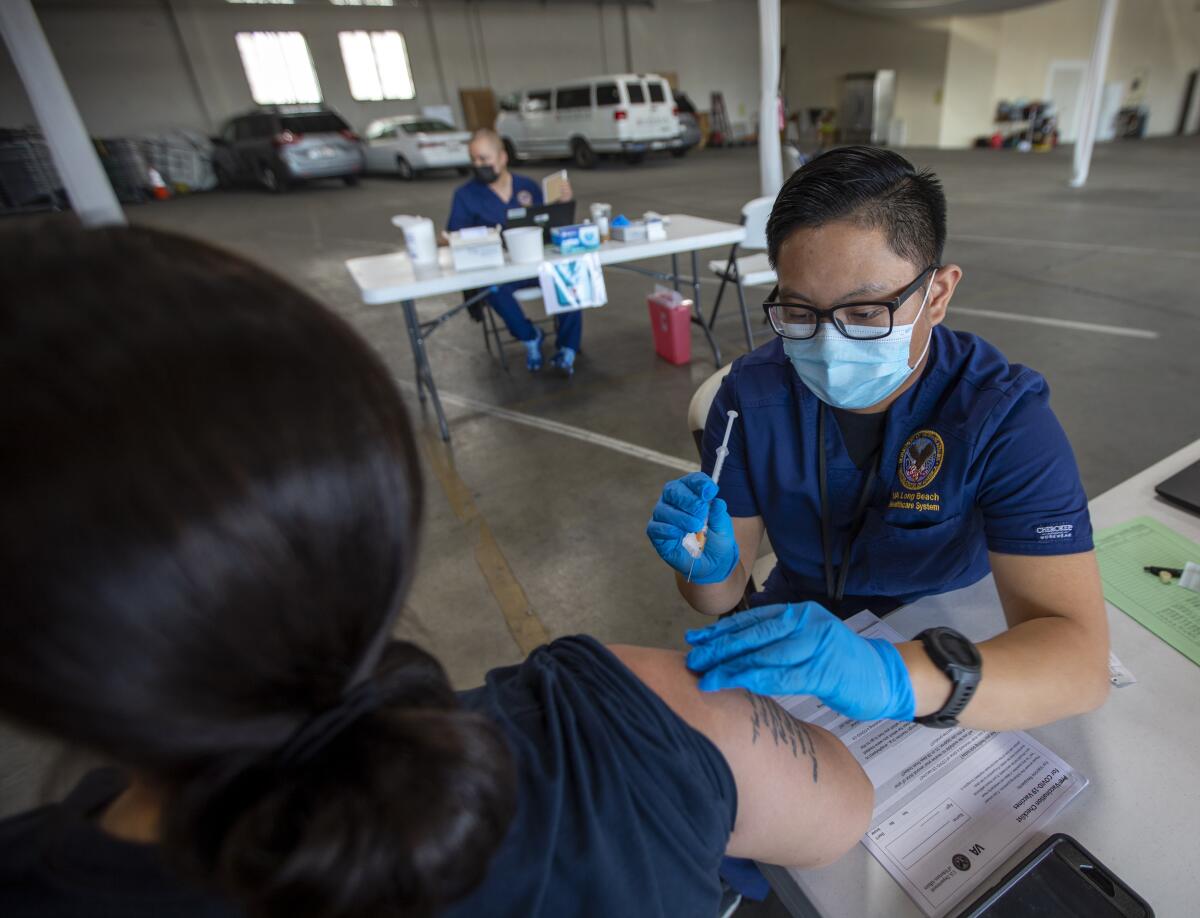
One in 4 Californians are now fully vaccinated for COVID-19 as the state continues its dash to widely inoculate residents and ward off any potential resurgence of the pandemic.
Despite the sheer numbers involved in reaching that threshold — roughly 10 million residents have gotten either both required doses of Pfizer-BioNTech or Moderna or a single shot of the currently paused Johnson & Johnson vaccine — federal data show that the state is continuing to lag behind others in terms of completely vaccinating its populace.
California ranks 32nd among all states in the proportion of its population that’s considered fully vaccinated, according to figures from the Centers for Disease Control and Prevention. The highest rates of vaccination coverage have been logged in Maine and New Mexico, 32.3%; Alaska, 32.1%; and Connecticut and Rhode Island, 31.6%.
Among larger states, those same rates are 26.1% in Pennsylvania, 24.3% in Florida, and 22.3% in Texas.
California officials say they do not plan to require vaccine verification, but new rules incentivize private venues to seek proof of tests or inoculation.
Roughly 25.4% of all Americans are now fully vaccinated, CDC data show.
However, while people may be considered fully vaccinated for accounting purposes as soon as they receive their final required shot, health officials stress that they won’t reach the maximum level of protection until two weeks after their last dose.
California stacks up far better when looking at the proportion of its overall population that has received at least one vaccine dose.
Its figure, 43.2%, is tied for ninth among all states.
The raw number of doses administered in California — nearly 26.1 million to date — is 9.5 million higher than that of any other state, and “more than all but five countries in the world,” Gov. Gavin Newsom noted Sunday.
You’ve gotten your first COVID-19 vaccination appointment. Try out these scenarios to see if you know how to live post-vaccine.
Though the Golden State remains significantly short of the level of vaccination coverage experts think will be necessary to quell the pandemic, each shot is another step forward in the long-running battle against COVID-19.
Officials have long noted that the available vaccines are overwhelmingly successful at staving off the worst health impacts of COVID-19, and there’s a growing body of evidence they also can put a significant dent in transmission of the coronavirus.
The CDC recently released data pertaining to “breakthrough infections,” a not unexpected situation in which a person tests positive for the virus at least 14 days after receiving a final vaccine dose.
As of Tuesday, the agency had received 5,814 reports of such cases. By comparison, more than 84 million Americans have been fully vaccinated.
Half of all adults in the U.S. have now received at least one COVID-19 shot
Although breakthrough cases have been reported in 43 states and territories and the number is “likely an underestimate, it still makes a really important point: These vaccines are working,” CDC Director Dr. Rochelle Walensky said Monday.
“This is really encouraging news,” she said during a briefing.
Nationwide, nearly 400 people with breakthrough infections had to be hospitalized and 74 died — though the CDC noted that “hospitalizations and deaths that are not a direct result of COVID-19 are still considered vaccine breakthrough cases if the person was fully vaccinated and subsequently tested positive for COVID-19.”
On the other hand, 29% of the breakthrough infections were asymptomatic.
“Here’s the bottom line: Getting a vaccine will help protect you,” Walensky said. “It will help protect others. And it will help us end this pandemic. The more people get vaccinated, the fewer infections there will be, which means fewer variants will emerge and fewer breakthrough infections will occur.”
An annual survey about quality of life revealed stark differences by socioeconomic status, telling a “tale of two L.A.s.”
With California having now opened vaccination eligibility to everyone 16 and older, providers are pushing to get as many shots into arms as supplies allow.
Vaccination sites in the city of Los Angeles are expected to administer more than 100,000 doses this week, officials said.
“With vaccine eligibility expanding and more people signing up to get their shots every day, our city remains excited and prepared to meet the new demand,” Mayor Eric Garcetti said in a statement. “Getting the vaccine is free, easy and safe. We will keep doing our part to vaccinate Angelenos and encourage everyone 16 and older to make an appointment, so that we can end the pandemic.”
L.A. County as a whole is set to receive 361,750 doses this week, officials said, but allocations sent directly from the federal government to locations such as qualified health centers and pharmacies are expected to swell the total supply to more than 600,000.
From April 4 through 11, the county reported an average of nearly 100,000 doses administered per day, according to Dr. Paul Simon, chief science officer for the L.A. County Department of Public Health.
“At this pace, we’re on track to fully vaccinate 80% of the county population 16 and older by the end of June,” he said during a briefing last week.
As the vaccine rollout continues, L.A. — along with providers throughout the state — is continuing to tweak its efforts as needs and circumstances dictate.
The county’s large-scale vaccination site at Six Flags Magic Mountain officially closed Sunday and has been replaced by two new locations at College of the Canyons in Santa Clarita and the Palmdale Oasis Park Recreation Center.
Are vaccines safe? When can I get a booster dose? Do I have to wear a mask? We’ve answered hundreds of newsletter readers’ questions. Here’s an archive.
Achieving wide inoculation is key both in helping eventually end the pandemic and, in the nearer term, fully reopening California’s long-battered economy — which state officials hope to do June 15.
Over the weeks to come, however, officials emphasize the importance of wearing masks in public, observing physical distancing and avoiding crowded situations, particularly indoors.
“By working together, taking precautions and all of us getting vaccinated, we can turn the corner on this public health crisis,” Walensky said.
More to Read
Sign up for Essential California
The most important California stories and recommendations in your inbox every morning.
You may occasionally receive promotional content from the Los Angeles Times.
